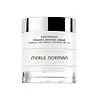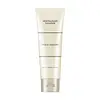What's inside
What's inside
 Key Ingredients
Key Ingredients

 Benefits
Benefits

 Concerns
Concerns

 Ingredients Side-by-side
Ingredients Side-by-side

Octocrylene 9.4%
UV AbsorberButyl Methoxydibenzoylmethane 1.9%
UV AbsorberWater
Skin ConditioningGlycerin
HumectantButyloctyl Salicylate
Skin ConditioningDiethylhexyl Maleate
EmollientJojoba Esters
EmollientCyclopentasiloxane
EmollientC10-30 Cholesterol/Lanosterol Esters
EmulsifyingPhenyl Trimethicone
Skin ConditioningStearic Acid
CleansingStearyl Alcohol
EmollientGlyceryl Polymethacrylate
Propylene Glycol
HumectantBiosaccharide Gum-1
HumectantSorbitan Stearate
EmulsifyingDimethicone
EmollientDipalmitoyl Hydroxyproline
Skin ConditioningPEG-100 Stearate
Polysorbate 60
EmulsifyingPPG-20 Methyl Glucose Ether
Skin ConditioningHydrolyzed Malt Extract
Skin ConditioningTocopheryl Acetate
AntioxidantCaprylyl Glycol
EmollientBis-Ethylhexyl Hydroxydimethoxy Benzylmalonate
AntioxidantBisabolol
MaskingCetearyl Methicone
Skin ConditioningHydrolyzed Elastin
EmollientHamamelis Virginiana Bark/Leaf/Twig Extract
Skin ConditioningPEG-8
HumectantAlcohol
AntimicrobialTriethanolamine
BufferingSorbitol
HumectantLecithin
EmollientCollagen Amino Acids
MoisturisingPEG-7m
Emulsion StabilisingCarbomer
Emulsion StabilisingDimethicone/Vinyl Dimethicone Crosspolymer
Skin ConditioningPhospholipids
Skin ConditioningSilica
AbrasiveCalluna Vulgaris Flower Extract
Skin ConditioningGlycyrrhetinic Acid
Skin ConditioningButylene Glycol
HumectantTetrasodium EDTA
Hydrolyzed Rice Protein
Skin ConditioningDisodium EDTA
Camellia Sinensis Leaf Extract
AntimicrobialPvp
Emulsion StabilisingPhenoxyethanol
PreservativeCucumis Sativus Fruit Extract
EmollientGinkgo Biloba Leaf Extract
Skin ConditioningRuscus Aculeatus Root Extract
AstringentChlorphenesin
AntimicrobialMethylisothiazolinone
PreservativeHyaluronic Acid
HumectantPolyquaternium-24
Ilex Aquifolium Leaf Extract
Skin ConditioningSodium Oleanolate
Skin ConditioningSodium Ursolate
Skin ConditioningAscorbyl Palmitate
AntioxidantEuphrasia Officinalis Extract
AntimicrobialEchinacea Angustifolia Extract
MoisturisingRetinyl Palmitate
Skin ConditioningDiazolidinyl Urea
PreservativeImidazolidinyl Urea
PreservativeCI 19140
Cosmetic ColorantPalmitoyl Hexapeptide-12
Skin ConditioningMethylparaben
PreservativeCI 14700
Cosmetic ColorantOctocrylene 9.4%, Butyl Methoxydibenzoylmethane 1.9%, Water, Glycerin, Butyloctyl Salicylate, Diethylhexyl Maleate, Jojoba Esters, Cyclopentasiloxane, C10-30 Cholesterol/Lanosterol Esters, Phenyl Trimethicone, Stearic Acid, Stearyl Alcohol, Glyceryl Polymethacrylate, Propylene Glycol, Biosaccharide Gum-1, Sorbitan Stearate, Dimethicone, Dipalmitoyl Hydroxyproline, PEG-100 Stearate, Polysorbate 60, PPG-20 Methyl Glucose Ether, Hydrolyzed Malt Extract, Tocopheryl Acetate, Caprylyl Glycol, Bis-Ethylhexyl Hydroxydimethoxy Benzylmalonate, Bisabolol, Cetearyl Methicone, Hydrolyzed Elastin, Hamamelis Virginiana Bark/Leaf/Twig Extract, PEG-8, Alcohol, Triethanolamine, Sorbitol, Lecithin, Collagen Amino Acids, PEG-7m, Carbomer, Dimethicone/Vinyl Dimethicone Crosspolymer, Phospholipids, Silica, Calluna Vulgaris Flower Extract, Glycyrrhetinic Acid, Butylene Glycol, Tetrasodium EDTA, Hydrolyzed Rice Protein, Disodium EDTA, Camellia Sinensis Leaf Extract, Pvp, Phenoxyethanol, Cucumis Sativus Fruit Extract, Ginkgo Biloba Leaf Extract, Ruscus Aculeatus Root Extract, Chlorphenesin, Methylisothiazolinone, Hyaluronic Acid, Polyquaternium-24, Ilex Aquifolium Leaf Extract, Sodium Oleanolate, Sodium Ursolate, Ascorbyl Palmitate, Euphrasia Officinalis Extract, Echinacea Angustifolia Extract, Retinyl Palmitate, Diazolidinyl Urea, Imidazolidinyl Urea, CI 19140, Palmitoyl Hexapeptide-12, Methylparaben, CI 14700
Water
Skin ConditioningDecyl Glucoside
CleansingPhytelephas Aequatorialis Seed Powder
Methyl Gluceth-20
HumectantGlycerin
HumectantDisodium Cocoamphodiacetate
Cleansing1,2-Hexanediol
Skin ConditioningLactose
HumectantMannitol
HumectantCellulose
AbsorbentAscorbyl Palmitate
AntioxidantRetinyl Palmitate
Skin ConditioningTocopheryl Acetate
AntioxidantTriethyl Citrate
MaskingMica
Cosmetic ColorantAcrylates/Ammonium Methacrylate Copolymer
Hydroxyacetophenone
AntioxidantMicrocrystalline Cellulose
AbsorbentHydroxypropyl Methylcellulose
Emulsion StabilisingAcrylates/C10-30 Alkyl Acrylate Crosspolymer
Emulsion StabilisingXanthan Gum
EmulsifyingAminomethyl Propanol
BufferingDisodium EDTA
Parfum
MaskingTalc
AbrasiveIron Oxides
CI 77891
Cosmetic ColorantWater, Decyl Glucoside, Phytelephas Aequatorialis Seed Powder, Methyl Gluceth-20, Glycerin, Disodium Cocoamphodiacetate, 1,2-Hexanediol, Lactose, Mannitol, Cellulose, Ascorbyl Palmitate, Retinyl Palmitate, Tocopheryl Acetate, Triethyl Citrate, Mica, Acrylates/Ammonium Methacrylate Copolymer, Hydroxyacetophenone, Microcrystalline Cellulose, Hydroxypropyl Methylcellulose, Acrylates/C10-30 Alkyl Acrylate Crosspolymer, Xanthan Gum, Aminomethyl Propanol, Disodium EDTA, Parfum, Talc, Iron Oxides, CI 77891
Alternatives
Ingredients Explained
These ingredients are found in both products.
Ingredients higher up in an ingredient list are typically present in a larger amount.
Ascorbyl Palmitate is created by combining pure Vitamin C and palmitic acid. It is an antioxidant and helps reduce hyperpigmentation.
This ingredient is a more stable version of Vitamin C, meaning it does not disintegrate as quickly when exposed to sunlight. However, studies show it does not penetrate skin as well as pure Vitamin C.
Ascorbyl Palmitate is oil soluble.
Read more about other types of Vitamin C:
Learn more about Ascorbyl PalmitateDisodium EDTA plays a role in making products more stable by aiding other preservatives.
It is a chelating agent, meaning it neutralizes metal ions that may be found in a product.
Disodium EDTA is a salt of edetic acid and is found to be safe in cosmetic ingredients.
Learn more about Disodium EDTAGlycerin is already naturally found in your skin. It helps moisturize and protect your skin.
A study from 2016 found glycerin to be more effective as a humectant than AHAs and hyaluronic acid.
As a humectant, it helps the skin stay hydrated by pulling moisture to your skin. The low molecular weight of glycerin allows it to pull moisture into the deeper layers of your skin.
Hydrated skin improves your skin barrier; Your skin barrier helps protect against irritants and bacteria.
Glycerin has also been found to have antimicrobial and antiviral properties. Due to these properties, glycerin is often used in wound and burn treatments.
In cosmetics, glycerin is usually derived from plants such as soybean or palm. However, it can also be sourced from animals, such as tallow or animal fat.
This ingredient is organic, colorless, odorless, and non-toxic.
Glycerin is the name for this ingredient in American English. British English uses Glycerol/Glycerine.
Learn more about GlycerinRetinyl palmitate is a form of retinoid. Retinoids are the superstar class of anti-aging ingredients that include tretinoin and retinol.
This particular ingredient has had a bumpy year with its rise and fall in popularity.
First, Retinyl palmitate is created from palmitic acid and retinol. It is a retinol ester and considered one of the weaker forms of retinoid.
This is because all retinoids have to be converted to Tretinoin, AKA retinoic acid. Retinyl Palmitate is pretty far down the line and has to go through multiple conversions before its effects are seen.
Due to this long and ineffective conversion line, the benefits of Retinyl Palmitate are debated.
Studies show Retinyl Palmitate to help:
Dermatologists say this ingredient is ineffective because it isn't used in high enough concentrations in cosmetics.
This ingredient used to be found in sunscreens to boost the efficacy of sunscreen filters.
The downfall of Retinyl Palmitate was due to released reports about the ingredient being correlated to sun damage and skin tumors.
While there is a study showing this ingredient to cause DNA damage when exposed to UV-A, there is no concrete proof of it being linked to skin cancer. It is safe to use when used correctly.
All retinoids increase your skin's sensitivity to the sun in the first few months of usage. Be especially careful with reapplying sunscreen when using any form of retinoid.
Currently, this ingredient is still allowed in cosmetics all over the world. In Canada, cosmetics must have a warning label stating the product to contain Retinyl Palmitate
Fun fact: This ingredient is often added to low-fat milk to increase the levels of Vitamin A.
Learn more about Retinyl PalmitateTocopheryl Acetate is AKA Vitamin E. It is an antioxidant and protects your skin from free radicals. Free radicals damage the skin by breaking down collagen.
One study found using Tocopheryl Acetate with Vitamin C decreased the number of sunburned cells.
Tocopheryl Acetate is commonly found in both skincare and dietary supplements.
Learn more about Tocopheryl AcetateWater. It's the most common cosmetic ingredient of all. You'll usually see it at the top of ingredient lists, meaning that it makes up the largest part of the product.
So why is it so popular? Water most often acts as a solvent - this means that it helps dissolve other ingredients into the formulation.
You'll also recognize water as that liquid we all need to stay alive. If you see this, drink a glass of water. Stay hydrated!
Learn more about Water